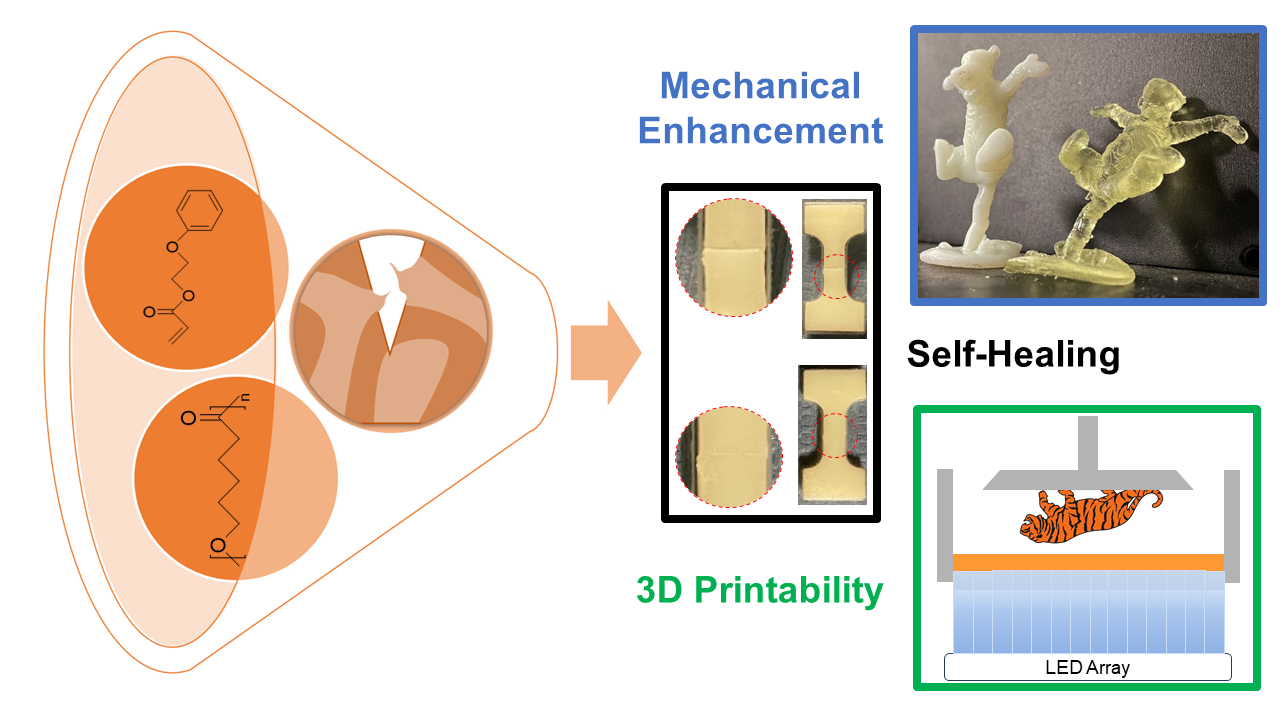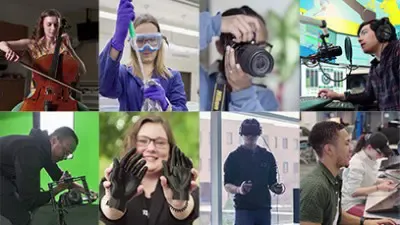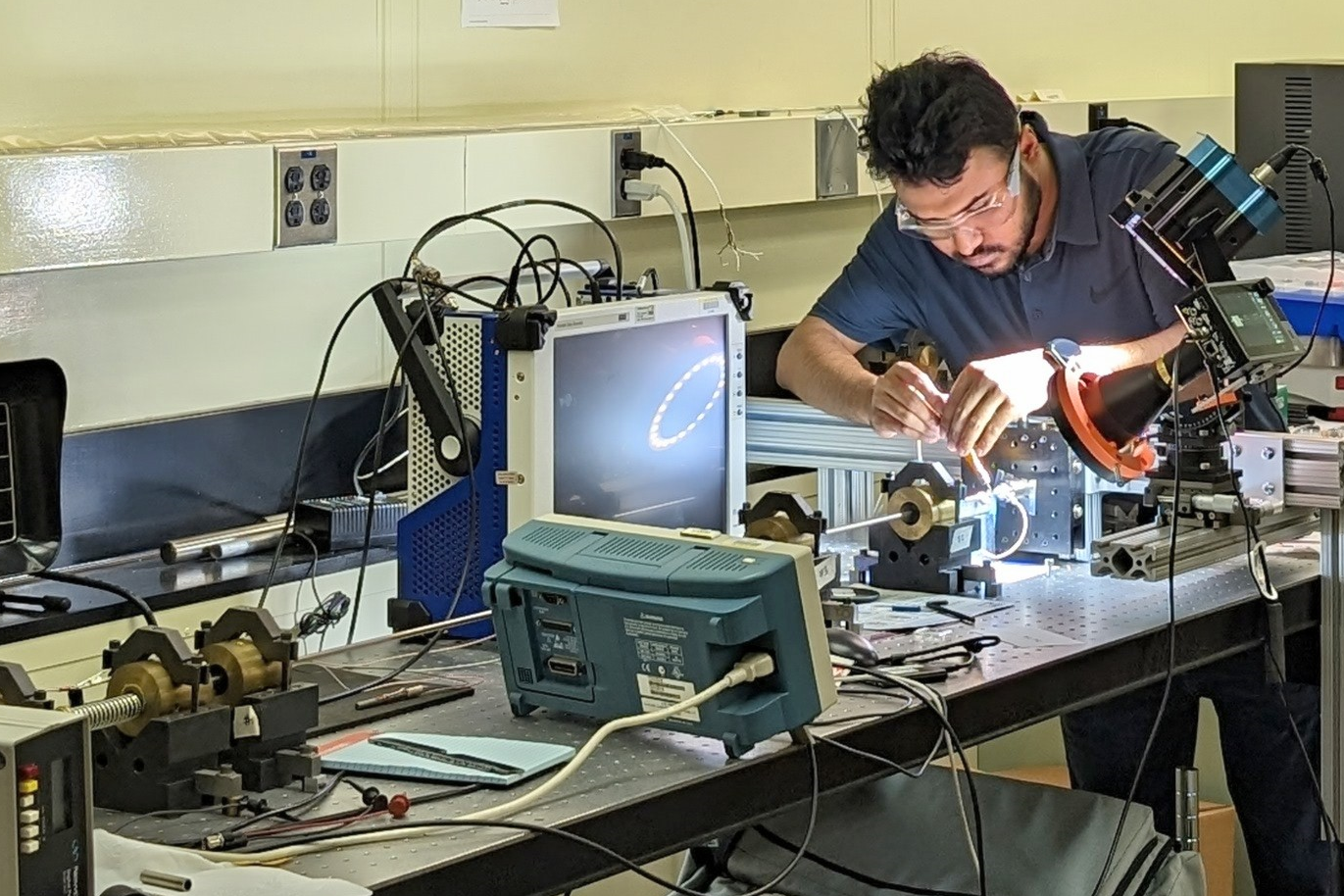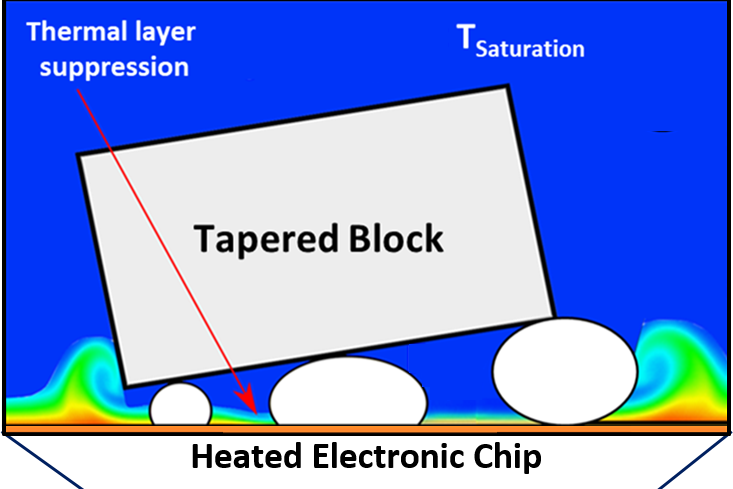Engineering Self-Healing into 3D Printing to Enhance Sustainability
The research article explores the integration of self-healing capabilities into 3D printing using photopolymer systems to enhance sustainability and material performance.

Sales of photopolymers for additive manufacturing grew steadily until plateauing around 2021 at approximately $650 million [1]. However, the growing interest in functional materials—such as self-healing polymers—may reinvigorate the market and drive a renewed upward trend in photopolymer use for 3D printing. Additive manufacturing enables the production of complex geometries with minimal start-up and tooling costs. The use of materials with inherent functionality to create highly engineered parts for specialized applications further expands the market potential for additive manufacturing.
Light-driven 3D printing technologies offer high-resolution manufacturing while allowing for customization of the material system, enabling tailored material properties in the final product. Self-healing polymers are able to recover a portion of their original mechanical integrity following self-repair. This ability would extend the life of a product which may have significant economic and environmental impact. This is especially important for aerospace applications [2-4], where repairing a component is more economical than carrying an inventory of replacement parts or delivering them on an as-needed basis. Between 1993 and 2009, five space missions were conducted to service the Hubble telescope [5], involving the transport of needed replacement components. In a 2004 report to the U.S. Senate estimating the cost of these missions, it was projected to range between $1.7 – $2.4 billion, with $43 million allocated for just the payload processing [6]. The implementation of high performance, self-healing materials would, at the very least, reduce the weight and payload requirements. SHP are not limited to just aerospace, but may find applications in various domains including biomedical [7-9], soft robotics [10-12], coatings [4, 13, 14], and military [15]. 3D printing (3DP) of these materials opens the door to manufacture complex geometries with self-healing capabilities, enhancing sustainability and enabling its application into these domains.
My research aims to develop a straightforward approach for 3D printing self-healing photopolymer systems [16]. Self-healing is achieved by combining a low-melting temperature thermoplastic polymer with a conventional thermoset polymer for 3D printing. The thermoset/thermoplastic resin must be transparent to allow for light to pass through it for the thermoset resin to be cured in the presence of the thermoplastic polymer; as such, the two-material system must form a transparent, homogeneous resin. Upon curing, the materials separate and create two distinct yet intertwined solid phases. Healing occurs when the thermoplastic phase is melted, allowing it to flow into the damaged area while the thermoset phase, which cannot be remelted, provides geometric stability. Upon cooling, the thermoplastic phase solidifies, effectively acting as an adhesive to repair the damaged material. We have found several formulations that exhibited near-complete recovery of mechanical properties. The addition of this thermoplastic polymer was found to also improve mechanical properties as well, creating both a tougher and stronger material than the conventional 3D printing thermoset resin. While the addition of the thermoplastic led to promising enhancements of photopolymers for additive manufacturing, its incorporation increases the difficulty of 3D printing these blends. My research provides insight into various factors that play a role in balancing the 3D printability, mechanical properties, and self-healing capabilities of this unique material system.
References
1. Wohlers, T. Wohlers Report 2022 3D Printing and Additive Manufacturing Global State of the Industry. https://wohlersassociates.com/product/wohlers-report-2022/ (accessed April 11, 2025).
2. Das, R.; Melchior, C.; Karumbaiah, K. Self-healing composites for aerospace applications. In Advanced composite materials for aerospace engineering, Elsevier: 2016, pp 333-364.
3. Kausar, A.; Ahmad, I.; Maaza, M.; Bocchetta, P. Self-Healing Nanocomposites—Advancements and Aerospace Applications. Journal of Composites Science 2023, 7, 148.
4. Kahar, N. N. F. N. M. N.; Osman, A. F.; Alosime, E.; Arsat, N.; Aida, N.; Azman, M.; Syamsir, A.; Itam, Z.; Hamid, Z. A. A. The Versatility of Polymeric Materials as Self-Healing Agents for Various Types of Applications: A Review. Polymers 2021, 13.
5. Servicing Missions. https://hubblesite.org/mission-and-telescope/servicing-missions (accessed November).
6. Costs for Hubble Servicing Mission and Implementation of Safety Recommendations Not Yet Definitive; United States Government Accountability Office: Report to the Subcommittee on VA/HUD-Independent Agencies, Committee on Appropriations, U.S. Senate, 2004.
7. Liu, Y.; Hsu, Y.-H.; Huang, A. P.-H.; Hsu, S.-h. Semi-interpenetrating polymer network of hyaluronan and chitosan self-healing hydrogels for central nervous system repair. ACS Applied Materials & Interfaces 2020, 12, 40108-40120.
8. Xie, J.; Yu, P.; Wang, Z.; Li, J. Recent advances of self-healing polymer materials via supramolecular forces for biomedical applications. Biomacromolecules 2022, 23, 641-660.
9. Ligon, S. C.; Liska, R.; Stampfl, J. r.; Gurr, M.; Mülhaupt, R. Polymers for 3D printing and customized additive manufacturing. Chemical reviews 2017, 117, 10212-10290.
10. Terryn, S.; Langenbach, J.; Roels, E.; Brancart, J.; Bakkali-Hassani, C.; Poutrel, Q.-A.; Georgopoulou, A.; Thuruthel, T. G.; Safaei, A.; Ferrentino, P. A review on self-healing polymers for soft robotics. Materials Today 2021, 47, 187-205.
11. Roels, E.; Terryn, S.; Brancart, J.; Sahraeeazartamar, F.; Clemens, F.; Van Assche, G.; Vanderborght, B. Self-healing sensorized soft robots. Materials Today Electronics 2022, 1, 100003.
12. Roels, E.; Terryn, S.; Iida, F.; Bosman, A. W.; Norvez, S.; Clemens, F.; Van Assche, G.; Vanderborght, B.; Brancart, J. Processing of self‐healing polymers for soft robotics. Advanced Materials 2022, 34, 2104798.
13. Beach, M.; Davey, T.; Subramanian, P.; Such, G. Self-healing organic coatings – Fundamental chemistry to commercial application. Elsevier: Progress in Organic Coatings, 2023; Vol. 183.
14. Zhang, F.; Ju, P.; Pan, M.; Zhang, D.; Huang, Y.; Li, G.; Li, X. Self-healing mechanisms in smart protective coatings: A review. Elsevier: Corrosion Science, 2018; Vol. 144, pp 74-88.
15. Affairs, U. S. A. C. A. R. L. P. Army researchers explore self-healing materials. https://www.army.mil/article/238186/army_researchers_explore_self_healing_materials (accessed November 30).
16. V. Mei, K. Schimmelpfennig, E. Caravaca, S. Colvin and C. L. Lewis, "Investigating the Structure–Property−Processing Relationship of Polycaprolactone-Based 3D Printed Self-Healing Polymer Blends," ACS Applied Polymer Materials, vol. 6, pp. 2177-2187, 2024.













